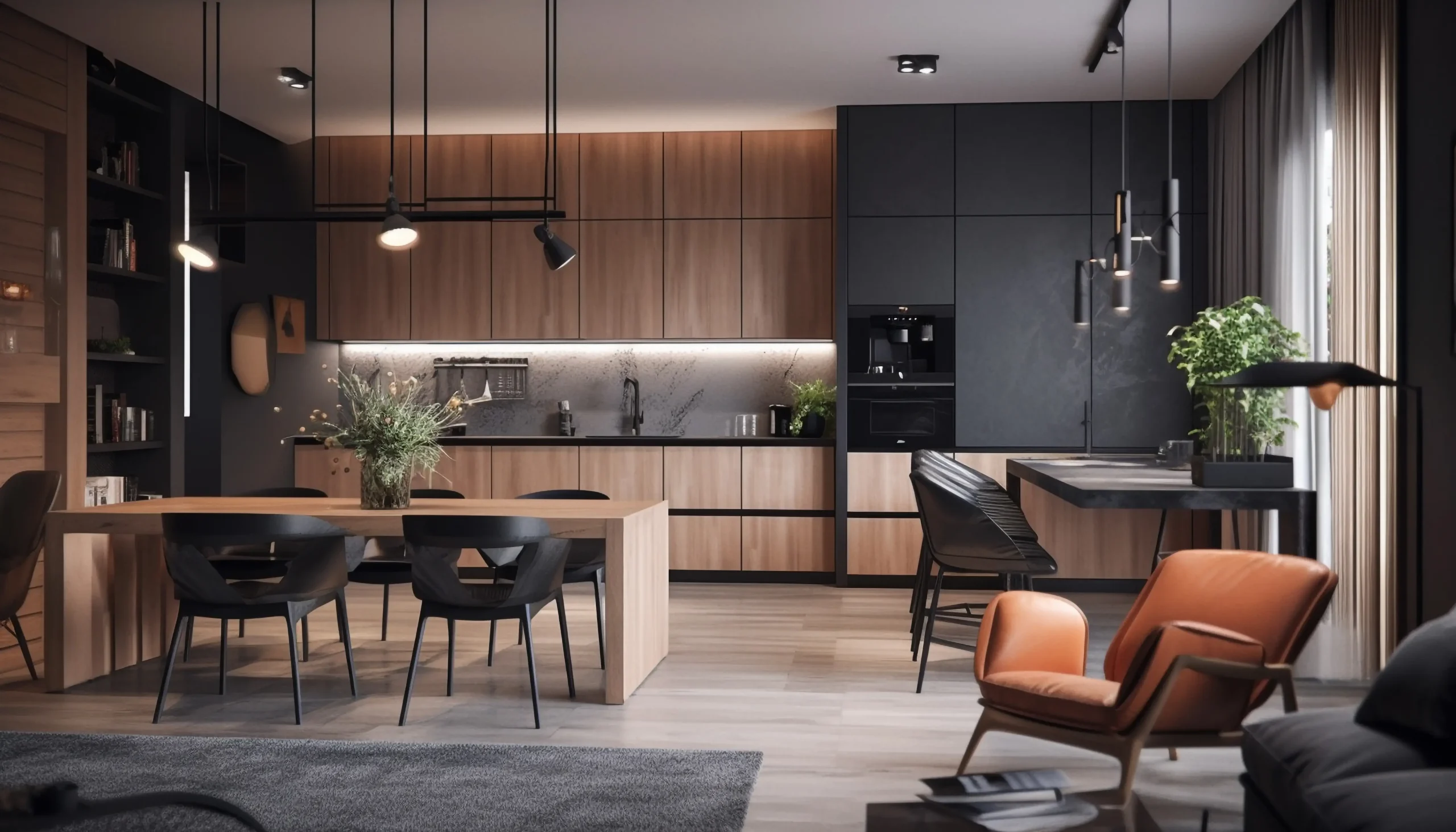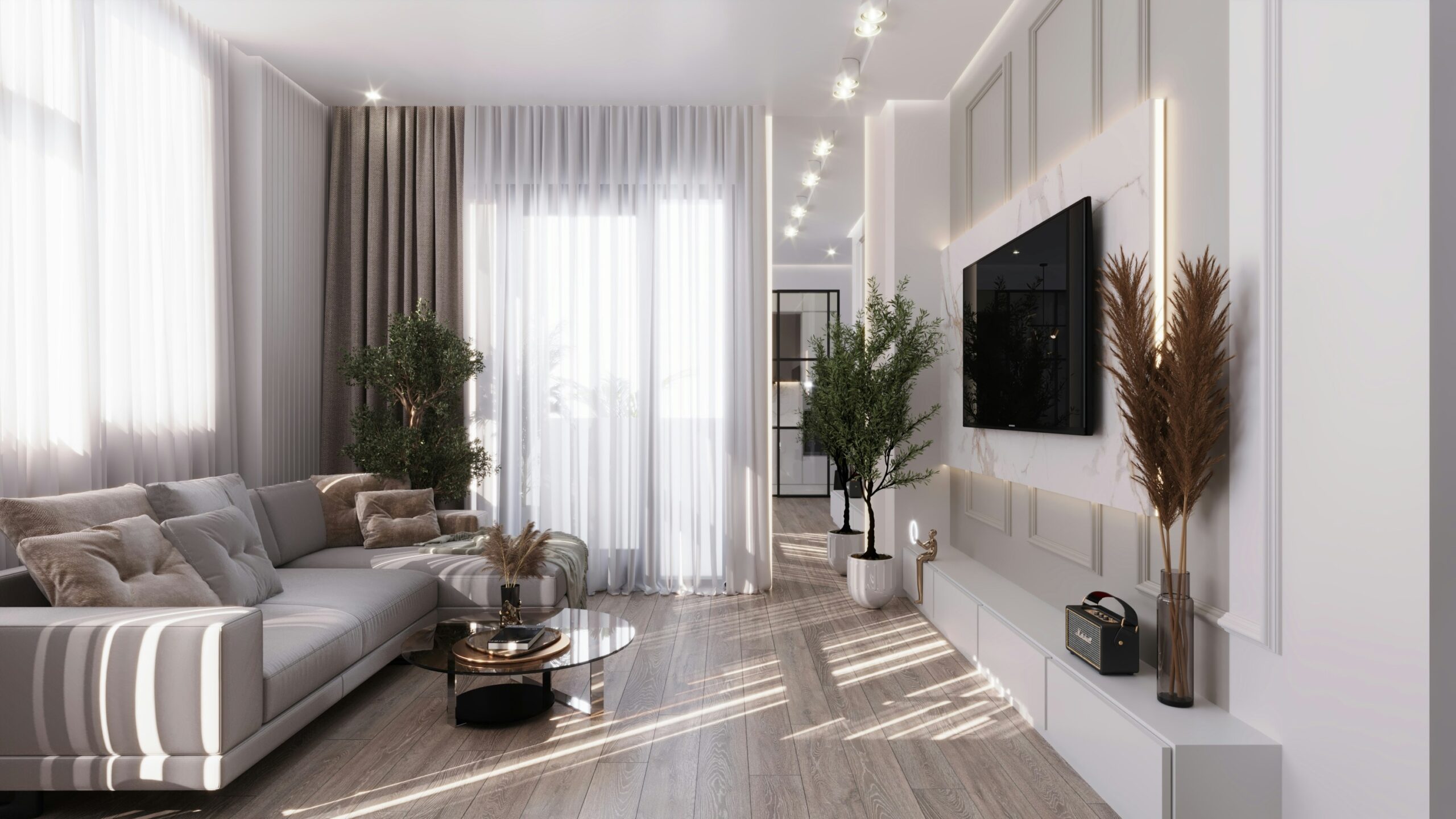
Did you know it’s possible to have a smart, connected home that’s still light, organized, and free of visual clutter?
Technology is no longer synonymous with excess and has begun to integrate subtly into daily life — especially for those who adopt minimalism as a lifestyle.
In this article, you’ll discover 10 smart devices perfect for a minimalist style, combining practicality, functionality, and clean design. These gadgets are ideal for anyone looking to automate their home efficiently without compromising aesthetics — and well-being.
Whether you’re starting to build a smart home from scratch or want to enhance an environment with more purpose and less excess, this selection will transform how you interact with your home.
Why Choose Minimalist Smart Devices?
Choosing minimalist smart devices goes far beyond aesthetics — it’s a decision involving practicality, well-being, and functionality. Instead of turning your home into a “technology showroom,” the focus is on using innovation consciously, with purpose and lightness.
Functionality with fewer visual distractions
In minimalist environments, excessive lights, visible wires, and exposed devices can compromise the sense of calm and balance. Devices with a clean design, without flashing LEDs or scattered controls, contribute to a more fluid and comfortable home.
Fewer visual stimuli = more concentration and well-being.
Integration with the environment’s aesthetics
The best gadgets for minimalist homes are those that adapt to the environment, not the other way around.
Built-in models, neutral colors, matte finishes, and simple lines help maintain an organized and harmonious look without sacrificing technology.
More practicality, less complexity
By integrating automations into a single system — whether via a voice assistant or a centralized app — you eliminate the need for multiple controls and reduce the time spent on routine tasks.
The result? A home that works autonomously, but without interfering with your lifestyle.
How to Select Gadgets with Design and Purpose?
When setting up a smart home with a minimalist style, every choice matters. It’s not just about having the latest technology — but about choosing smart devices that make sense for your routine, integrate into the environment, and deliver more simplicity, not more distractions.
Prioritize multifunctionality
A single gadget can — and should — replace several.
Multifunctional devices optimize space, reduce cables, and make usage more intuitive.
Examples include:
- Speakers with light and temperature control
- Smart plugs with energy monitoring
- Integrated panels that combine multiple functions in one place
Fewer objects. Less noise. More efficiency.
Prefer neutral colors and discreet shapes
Visual minimalism also applies to technology.
Opt for devices in tones like matte white, black, gray, or beige, with soft shapes and opaque surfaces.
Avoid flashy screens, colorful LEDs, and exposed buttons. Ideally, the gadget should “disappear” into the environment, or at least not steal the spotlight.
Check compatibility with integration hubs
No need for an app for every device.
Solutions compatible with hubs like Google Home, Amazon Alexa, or Apple HomeKit are ideal for avoiding digital clutter and keeping control centralized.
This compatibility allows you to create automated routines with just a voice command, a tap on your phone — or even none at all, with presence sensors.
If you’re looking for functionality with less excess, it’s also worth checking out How to Automate Your Home Without Losing the Essence of Minimalism, with tips for starting light and with purpose.
The 10 Ideal Smart Devices for a Minimalist Home
If you want a smart, organized, and visually light home, here are 10 smart devices perfect for a minimalist style. They combine functional technology with discreet aesthetics, and are ideal for small, modern, and uncomplicated environments.
1. Smart bulbs with adjustable tone and intensity
Smart bulbs are one of the first steps for those wanting to automate with style.
They allow you to:
- Adjust light intensity
- Change the tone (cool white for focus, warm for relaxation)
- Schedule times or activate by voice command
With a simple design and integration with apps like Alexa or Google, they eliminate the need for visible switches and create cozy and modern environments.
2. Smart plugs with energy monitoring
Discreet and powerful, smart plugs control appliance consumption and allow you to:
- Turn on/off remotely
- Schedule appliance operation
- Monitor energy costs in real-time
They can be installed as built-in models, maintaining a clean and functional aesthetic.
3. Built-in smart switches
Perfect for replacing traditional switches, smart switches allow control of lights and fans without needing to change the bulbs.
Touch or discreet models integrate elegantly into the environment — without flashy lights or protruding buttons.
4. Minimalist motion sensors
These sensors trigger lights, blinds, or security systems based on presence.
They are small, easy to install, and operate autonomously, keeping technology invisible and efficient.
5. Smart thermostat with clean design
Temperature control can be done with style.
The smart thermostats of 2025 have a smooth appearance, intuitive interface, and avoid the use of multiple controls or visible wires.
They automatically adjust the climate according to your routine and save energy.
6. Voice assistant with discreet appearance
Devices like Echo Dot, Nest Mini, or HomePod Mini are small, round, without excessive shine, and feature a neutral fabric finish.
They replace remote controls, panels, and physical switches, concentrating functions in one spot.
7. Integrated automated blinds
Smart blinds regulate natural light effortlessly and eliminate cords or manual controls.
Some are integrated into the wall or ceiling and activated by voice or sensors — creating a clean and sophisticated look.
8. Mirrors with smart LED lighting
In the bathroom or bedroom, mirrors with built-in LEDs bring functionality and style.
With touch sensors or voice commands, they offer soft lighting without visible switches or loose wires.
9. Multifunctional smart speakers
Besides playing music, they control the home, respond to commands, and can even function as a routine hub.
Compact models with minimalist design integrate perfectly into the environment.
10. Central panel or hub with neutral appearance
If you want to control everything in one place, invest in a wall panel or fixed tablet with a clean look.
It replaces multiple devices, groups all commands, and can be built into furniture.

How to Organize Automation Without Losing Simplicity
A minimalist smart home is defined not only by the chosen devices but also by how they are organized and controlled. The simpler and more intuitive the experience, the more harmonious the environment will be.
Centralize control in one app or assistant
Avoid the chaos of multiple apps and commands.
Prefer integrated ecosystems, such as:
- Google Home
- Amazon Alexa
- Apple HomeKit
They allow you to control lights, temperature, sound, and automated routines through a single app or voice command.
This centralization brings practicality and reduces the excess of digital interfaces in your daily life.
Use routines to reduce manual interactions
True minimalist automation is one that requires fewer actions and more fluidity.
Set up routines to:
- Turn off all lights when leaving home
- Create a “relax mode” with soft lighting and ambient music
- Activate climate control minutes before you arrive
With this, you create a smart, functional, and peaceful environment that automatically responds to your routine.
Keep automation invisible whenever possible
Technology should be felt, but not necessarily seen.
Presence sensors, geolocation-based routines, and voice commands are powerful allies.
They make automation more organic and reduce the need to physically interact with devices.
Comparison Table: Minimalist vs. Traditional Gadgets
| Feature | Minimalist Gadgets | Traditional Gadgets |
|---|---|---|
| Design | Clean, discreet, neutral colors | Varied, often with visible LEDs and buttons |
| Integration | Easy with hubs (Alexa, Google Home) | May require separate apps |
| Functionality | Focus on essentials, multifunctional | May have unnecessary extra features |
| Visual Impact | Low, harmonizes with the environment | High, can cause visual clutter |
| Control | Centralized (app, voice, routines) | Multiple controls and interfaces |
Conclusion: Technology with Purpose and Lightness
A minimalist smart home proves that it’s possible to combine the best of both worlds: the convenience of technology with the calm and organization of minimalism.
By choosing devices with clean design, prioritizing essential functionality, and centralizing control, you create a home that works for you — not the other way around.
Remember: the key is not to have every gadget on the market, but to select those that truly add value and simplify your daily life, keeping aesthetics and well-being first.
Ready to transform your home with discreet and functional technology?
